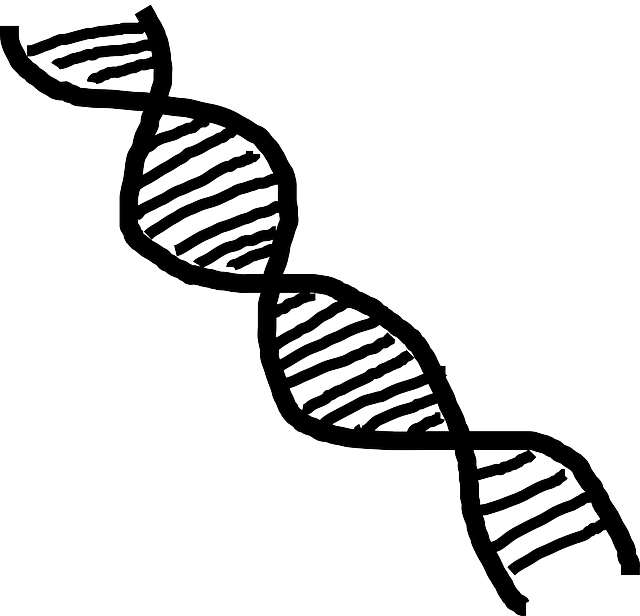April 15, 2003 marked the completion of the Human Genome Project, a landmark accomplishment for science and humankind. You might find yourself asking “What exactly is the Human Genome Project?” If so, you are in the right place. The Human Genome Project was a mammoth endeavor aimed at mapping and understanding all of our genes. The project, first-led by James Watson (yes, Watson of “Watson and Crick”- the original discoverers of DNA!), spanned 13 years and involved international investigators from universities and research centers across the US, UK, France, Germany, Japan, and China, including the Massachusetts-based Whitehead Institute/MIT Center for Genome Research and GTC Sequencing Center, Genome Therapeutics Corporation.
The team wasn’t completely made up of scientists and researchers though. Fear had been raised in the public about potentially harmful implications of sequencing the human genome—a pretty reasonable concern given some of the atrocities that had been conducted in the early 20th century, like forced sterilization. In response, ethicists, lawyers, and social scientists were involved in the project from the ground up, which birthed a new generation of scientists who consistently considered the social and ethical implications of their research—something we are all likely benefiting from today.
The project also couldn’t have happened without the genes! Volunteers representing a diverse population provided DNA samples for sequencing by donating their blood; and, given the sensitivity of the data, many more samples were obtained than were used in the analyses to maintain volunteers’ anonymity.
After getting over some of the hurdles in the public arena, you may be curious how a project of this size and scope (READ: huge budget) was approved. Well, in the US, President Clinton, Newt Gingrich, and other politicians active in the 1990s were fortunately supportive of the project, and Congress ultimately funded the National Institutes of Health (NIH) and Department of Energy (DOE) nearly $3 billion in fiscal year 1991 dollars to do the work.
And, if you are wondering how scientists actually cracked the code of the human genome, it involved a sequence (yes, pun intended!) of three key steps: 1) identifying the order of all of the nucleotide bases in our DNA (A,G,T,C); 2) mapping gene locations for major aspects of our chromosomes, and 3) creating linkage maps to track inherited traits and better understand genetic diseases.
Finally, you may not know this if you don’t work in genomics, but there were actually some gaps, or missing DNA sequences, in the 2003 release. In fact, the sequencing of the human genome was only 92% complete at the official end of the project. Scientists have since sequenced the remaining 8%, as published last month in Science.
Overall, there are many lessons to be learned from the Human Genome Project, and I’ll share a few that I came across while researching this post:
- the benefits of interdisciplinary teams and large-scale cooperative science efforts that include many institutions. The Human Genome Project was really the birth of “team science” —a practice that is now common throughout the scientific community including at the MGH/Martinos Center.
- an “open science” culture. There was an emphasis within the Human Genome Project to share the data immediately, which led to more rapid, scientific progress. When someone made a discovery, they shared it, which someone else picked up and improved upon—a reminder of the advantages of sharing our work via data repositories, pre-prints, etc.
- “necessity is the mother of invention” or “if you build it, they will come” (for all of you Kevin Costner fans out there in the audience). This project was pitched and funded before the technology to do it had been developed. It sounds unbelievable, but the sequencing was all done by hand when the project began. There are roughly 30,000 genes in the human genome. Think about it! It is very possible that we would still be waiting on the results if technological breakthroughs, like the automation of Sanger DNA sequencing, DNA-based genetic markers, and more, had not happened.
- the importance of pushing forward in the face of doubt. Genomes were initially thought to be too complicated to sequence using a computer. However, that couldn’t have been further from the truth. Computers and genomes made an excellent pair (yes, another pun intended – sorry!)—both are coded. Genes just use four symbols (A, G, T, C), instead of two (0, 1). Fortunately, Maynard Olson and others didn’t listen to the critics and pushed on.
A number of ‘ome projects were spawned following the Human Genome Project, including the Human Connectome Project—a collaboration between the University of Southern California and the Martinos Center that aims “to construct a map of the complete structural and functional neural connections in vivo within and across individuals.”
We look forward to hearing more from you about how large-scale projects like the Human Genome Project, Human Connectome Project, and others shape the culture of science from your perspective. Hint, hint – drop us a line if you’d like to be interviewed for a future post.
And that’s the latest “dose” of InsideOut—until next time, be well!
Contributed by: Natalie Gilmore
Additional Sources:



